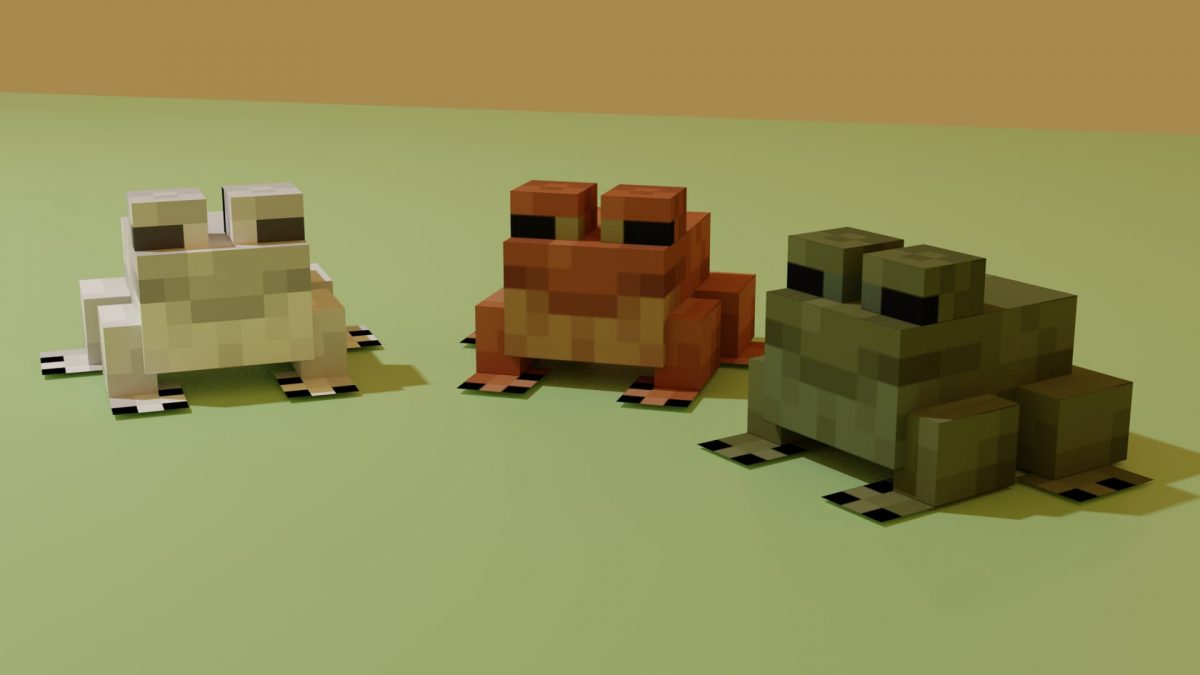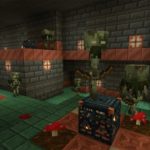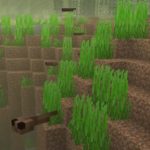In the Minecraft world, a biome is a specific region with its own geographical, climatic and environmental characteristics. Biomes determine not only the look and feel of an area, but also the types of plants and animals that reside there, as well as the resources that can be found there. They vary in size and complexity, from vast deserts and dense forests to rugged mountains and deep oceans.
Biomes play an essential role in the Minecraft gaming experience. They add depth and diversity to the world, creating a unique and immersive gaming experience. Each biome offers different challenges and opportunities, influencing how a player can explore, build and survive. Some biomes may be rich in valuable resources, while others may be home to dangerous creatures or extreme climatic conditions. Understanding and navigating these different biomes is a crucial part of the game’s strategy and enjoyment.
The main biomes
Plains
Plains are a common biome, generally devoid of trees. They are home to many passive creatures such as pigs, cows, sheep and horses. They generally border forests. Sunflower plains are the only biome where you can find sunflowers.
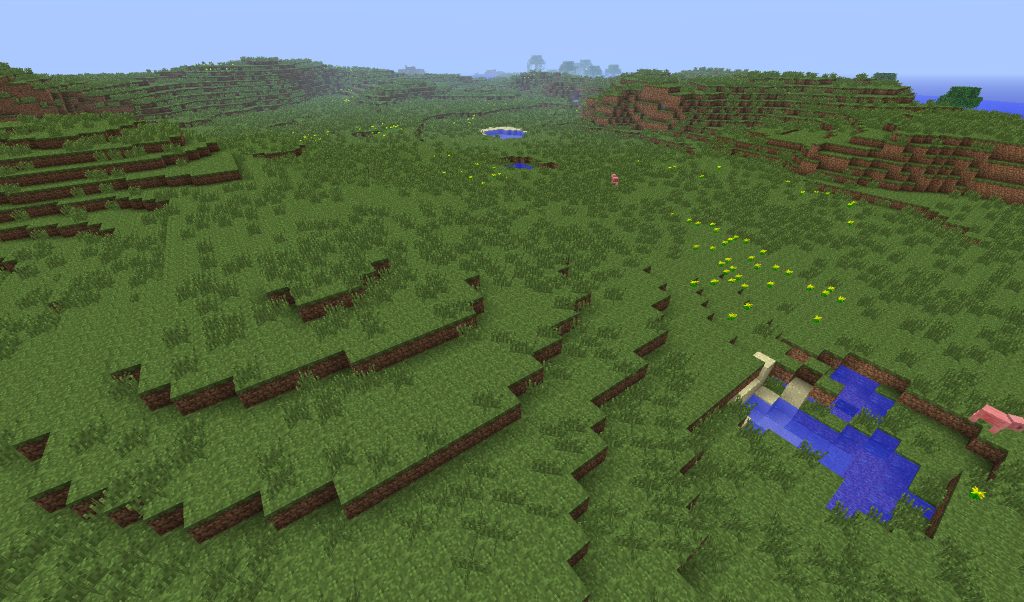
Forests
Forests are excellent places to start, as some have plenty of trees to harvest wood. Other forest variations include the flower forest, which grows almost every kind of flower in Minecraft.
Birch and dark oak forests are normal forests with variations in tree colors, both light and dark. Dark oak forests are the only biome where forest mansions can appear. Be careful, as manor houses and forests can contain hostile creatures. You may also find large mushrooms.
Jungles
There are three types of jungle biome in Minecraft. The first is a normal jungle biome and the second is a jungle edge biome. Jungle edge biomes are essentially mixed biomes that serve as a transition between jungle and non-jungle biomes. The third variant is a bamboo jungle, often found within larger jungle biomes. Pandas live mainly in bamboo jungles.

Mountains
You know you’re in a mountain biome when you see lots of rocks, floating islands, alcoves and spires. Mountain biomes are also the only places where you can find emeralds, which are very useful for trading with villagers.
There are two other mountain biomes : gravelly mountain biomes and wooded mountain biomes. As their name suggests, gravelly mountain biomes have lots of gravel blocks instead of stones. Trees don’t normally grow in gravelly mountain biomes, so look for trees in a wooded mountain biome.

Deserts
Desert biomes are very bare. They contain sand, sandstone, dead bushes, brown rabbits and cacti. In these biomes, you can sometimes find desert villages, raider outposts, temples and wells with lakes. A desert lake biome is an oasis in the middle of a vast desert.
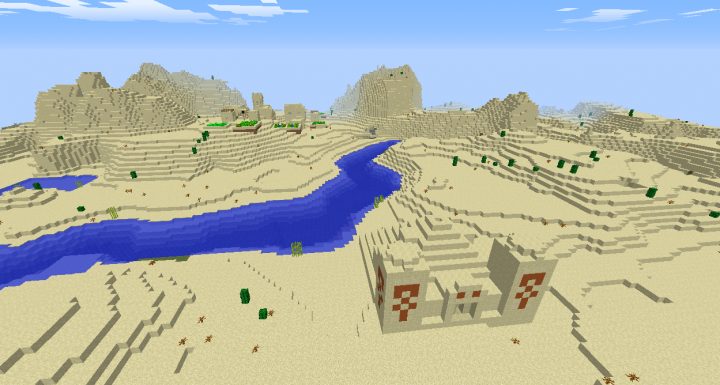
Taiga
Taiga biomes combine jungle and forest biomes. Spruces and ferns are generally found here. Taiga can contain wolves, foxes, sweet berry bushes, villages, raider outposts and much more.
The giant-tree Taiga variant of the Taiga biome contains much larger spruces and podzol on the ground. Snow taiga biomes can be home to wolves and arctic foxes. Mountain taiga biomes are more difficult to traverse due to their mountains, hostile creatures and occasional snow.
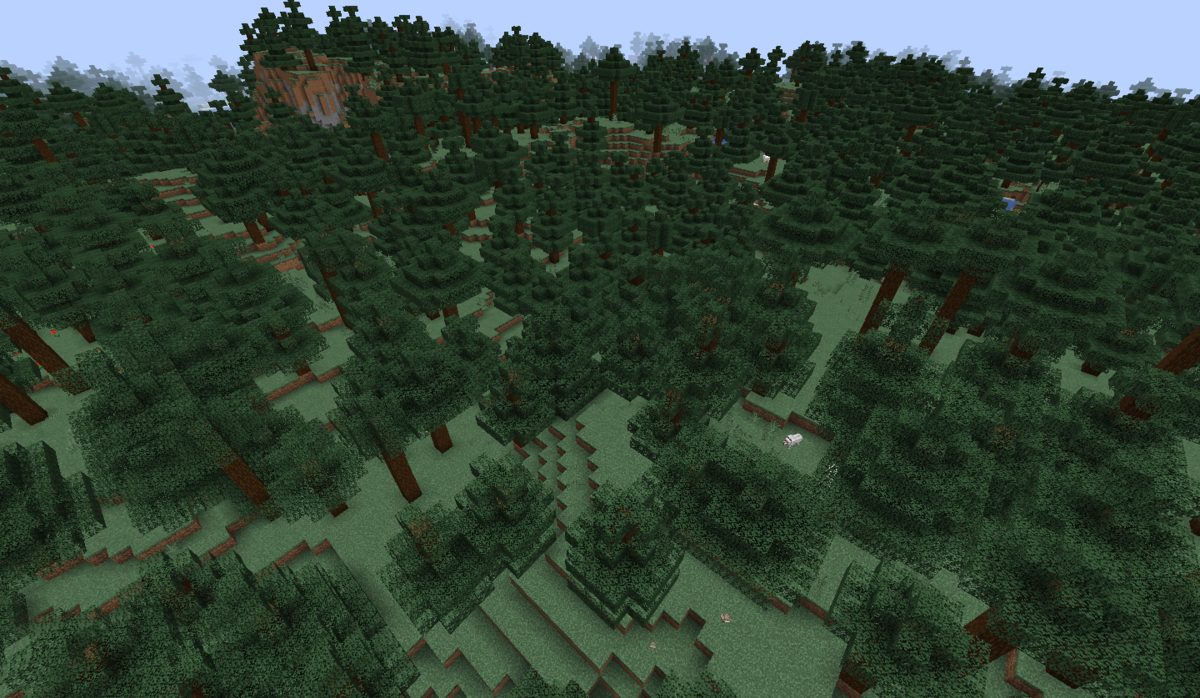
Snowy plains
Snow-covered plain biomes are characterized by vast expanses of snow-covered land. Wildlife is scarce, but polar bears and rabbits can be found here.
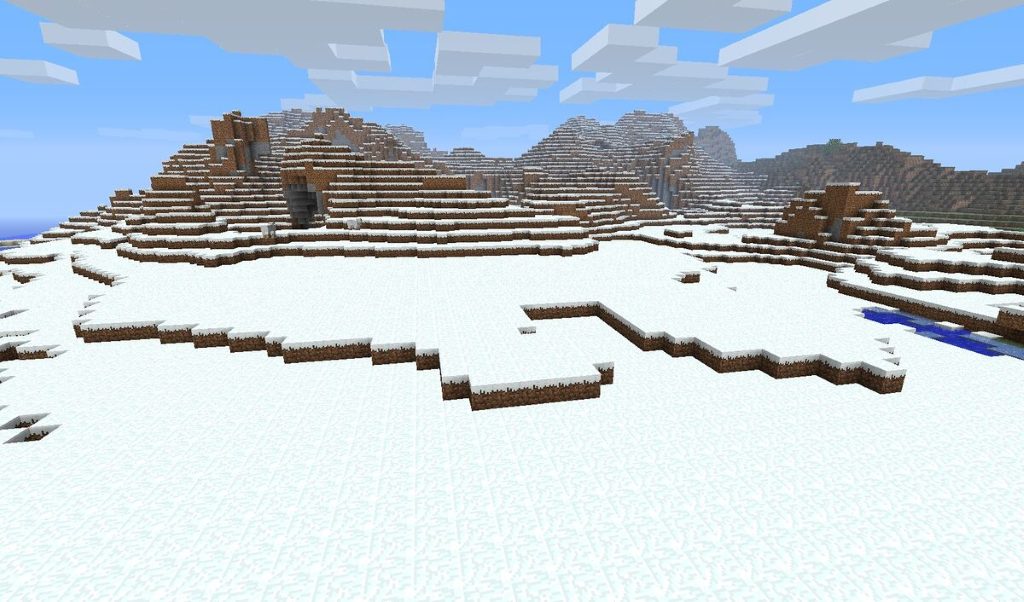
Frozen peaks
The rare Frozen Peaks biome features large structures and piles of ice scattered everywhere, like trees. Resources are even harder to find here than in the snowy tundra biome, but this biome contains large quantities of ice.
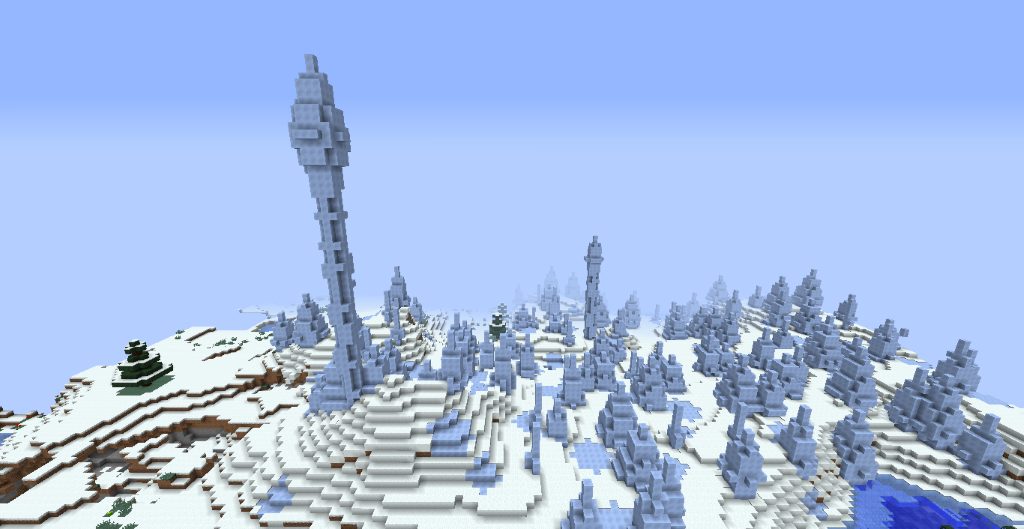
Swamps
Swamp biomes are generally one of the most dangerous biomes in which to survive. Abandoned huts appear in these biomes, and slime appearance points naturally occur at night. A variant is the mangrove swamp.
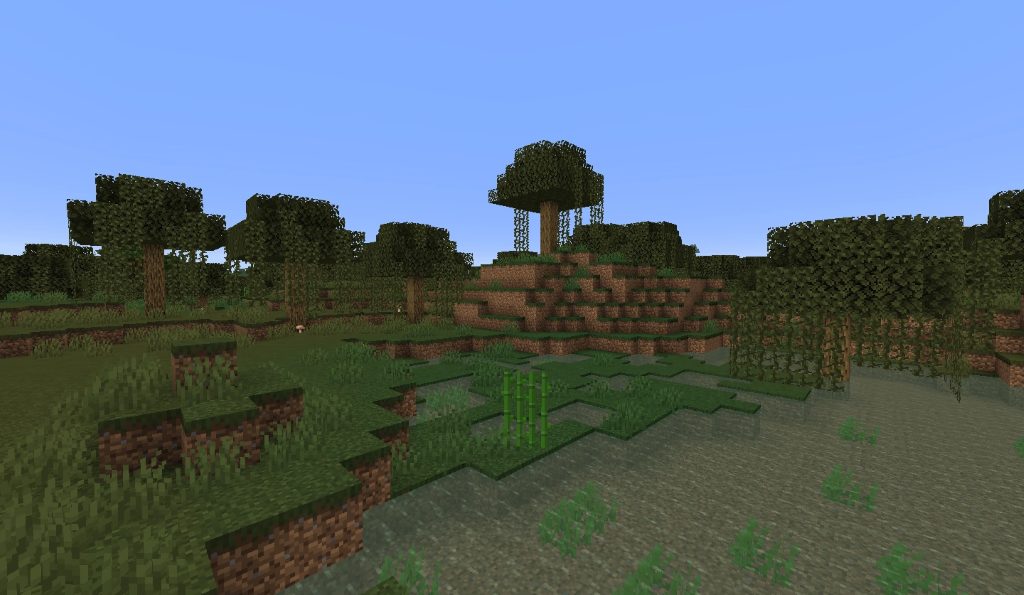
Savannah
In normal savannah biomes, you can find acacia trees and herds of horses and llamas. Villages and raider outposts can also be created in these biomes. Broken savannas feature steep mountains, deep lakes, lava or waterfalls, and random craters.

Badlands
Standard badlands contain large veins of gold and lots of red sand. Abandoned mine shafts are about the only structures you’ll find here, and hostile creatures appear at night. Eroded badlands are a rarer variant, with canyons in sight. Eroded badlands are often self-generating, unlike standard badlands which are often located next to deserts. Wooded badlands are a smaller biome where oak trees are often found in small numbers.
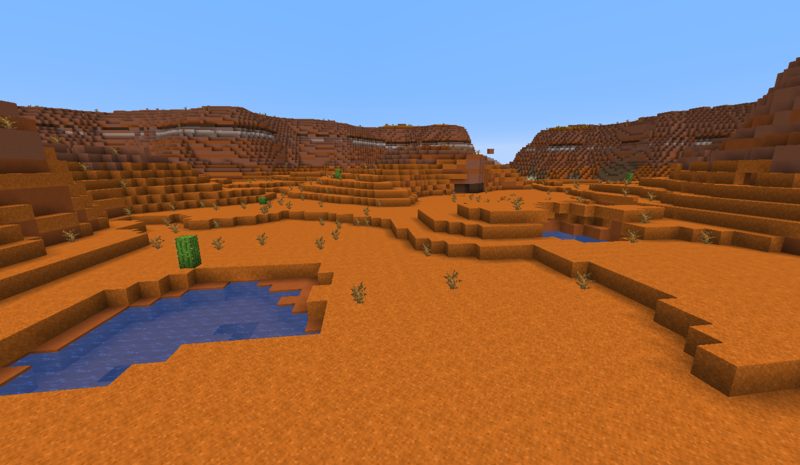
Beaches
Beach biomes are created whenever an ocean meets another biome. In addition to sand, they contain sugar cane, shipwrecks, buried treasure and turtles. Sometimes, the beaches are covered in snow.
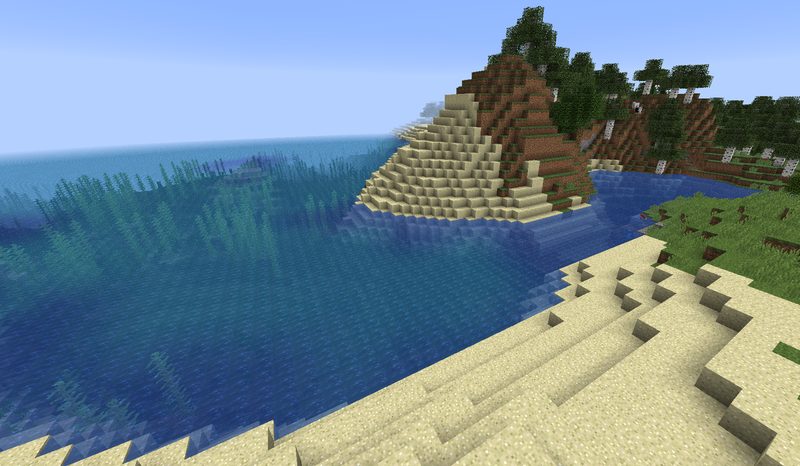
Stone shores
Stone shore biomes often appear when a mountain biome is generated near an ocean. These biomes are generally very small.
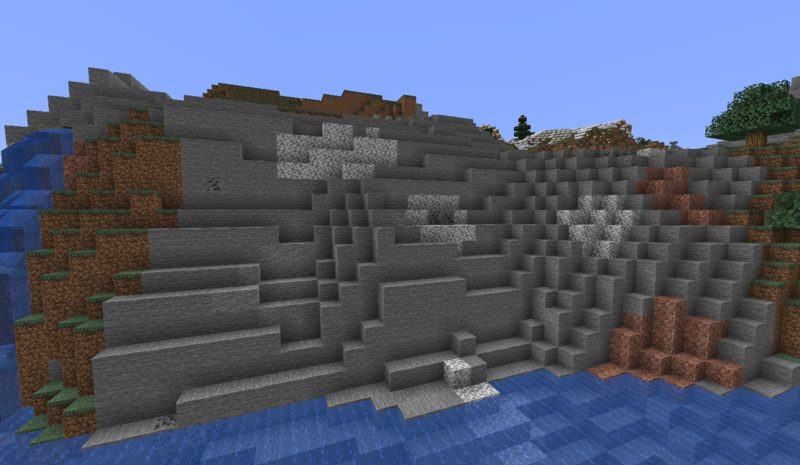
Rivers
River biomes usually cross several biomes and can contain sugar cane, sand, clay, octopus, salmon and drowned fish. Frozen rivers are essentially the same, except with snow, and with a reduced number of hostile creatures that may appear.

Oceans
The first of the five ocean biome variations is a basic ocean where sea grasses, kelp and fish abound. Warm ocean biomes are generally very lively. These biomes can naturally generate coral reefs with dolphins, pufferfish and tropical fish. Warm oceans do not contain coral reefs, but more seagrass and kelp.
There are also cod, salmon and the possibility of creating underwater monuments. Cold-ocean biomes contain less aquatic fauna, but still cod, salmon and dolphins. Underwater monuments can sometimes be found in the deep blue of the water. Frozen ocean biomes contain only salmon, octopus and underwater monuments. Where there is ice, polar bears can sometimes be found on the surface of the water.
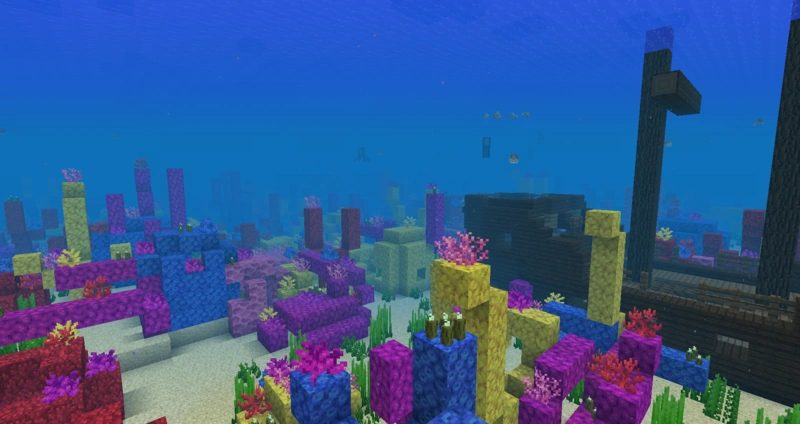
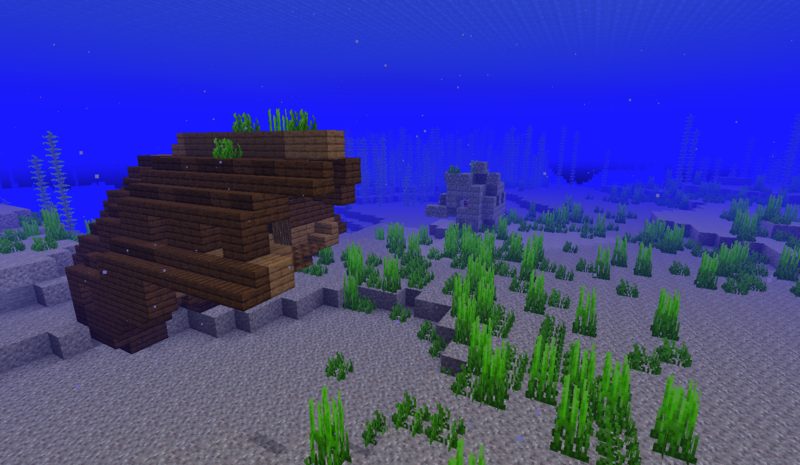
Mushroom islands
Mushroom biomes are very rare and usually develop in the middle of the ocean, far from any other biome. They are large islands of mycelium, which accelerates and encourages mushroom growth. You can also find champimeuh in this biome. No hostile creatures can appear here.
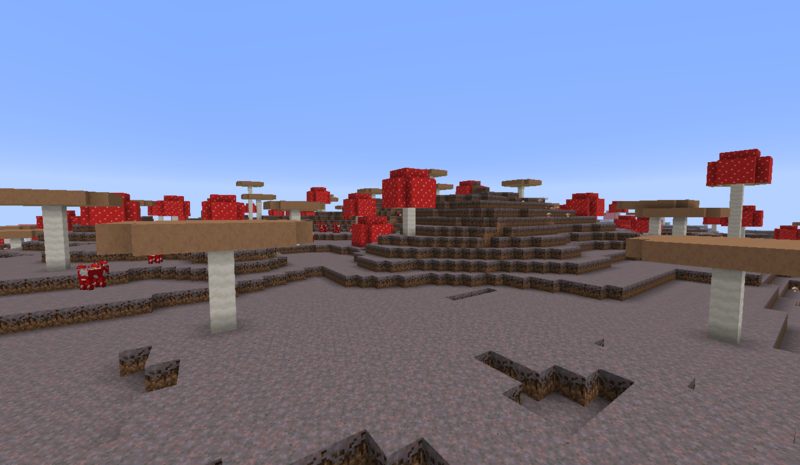
The Nether
The Nether is a complex dimension made up of several unique biomes, separated from the normal world by a Nether portal. The Desolate Lands of the Nether are the remains of the old Nether, full of netherracks and lava lakes. The Valley of Souls is a vast, bluish cave filled with sand and the soil of souls.
The Carmine Forest is a red biome with giant mushrooms, while the Biscornue Forest is a more peaceful variation with a bluish theme. The Basalt Deltas are a volcanic biome, rich in black rock and basalt. Each biome is home to unique creatures and structures, adding diversity and intrigue to this mysterious dimension.

The End
End biomes are generally made up of five elements. The End is separate from the Normal World and the Nether and is guaranteed to be generated every time you create an End portal. Here, a giant central island is surrounded by several smaller islands and zones. The End Islands are smaller islands that float between the voids and larger parts of the End. Here you can find Endermen.
The Middle Lands of the End are larger areas that make the transition between the center and the outer edges of the End. Here you’ll find Shulkers, Endermen, End portals and End cities. The End Highlands are the End’s main biome, home to End cities and chorus trees. End portals are generally found at the far end of the void. End barren lands are generally found on the outskirts of the main End areas or lands, like the beaches of the normal world.
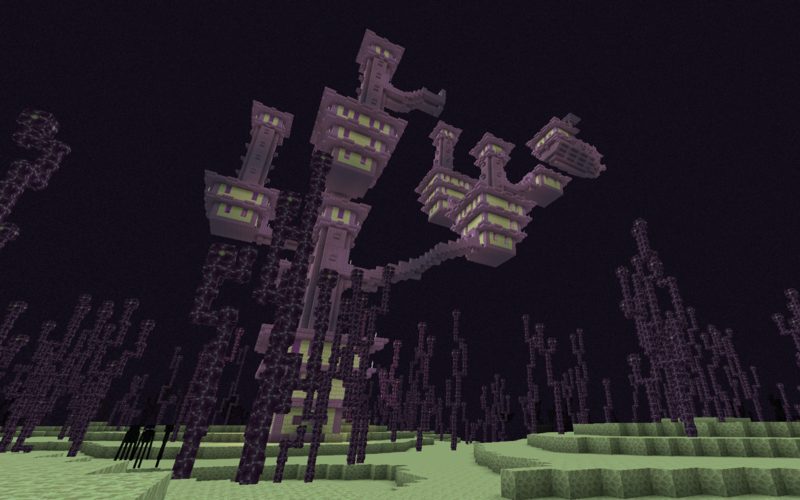
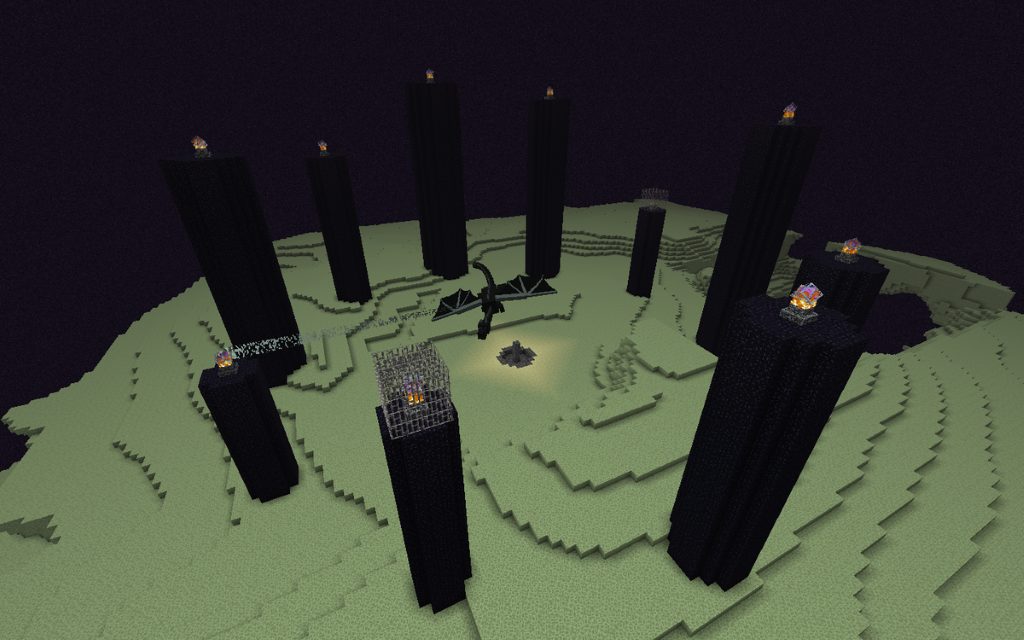
Interaction with Biomes
Exploration and survival
Exploration and survival in different biomes require an understanding of and adaptation to the unique conditions of each region. In deserts, for example, players need to be aware of water scarcity and high temperatures, while in snowy biomes they need to be prepared for freezing temperatures.
- Exploration strategies : Each biome offers unique exploration opportunities, from hidden temples in the jungles to villages on the plains. Knowledge of the characteristics of each biome can help find specific treasures and structures.
- Survival techniques : Surviving in different biomes requires specific techniques. For example, building a shelter in a desert may require different materials than in a forest. Local flora and fauna can also influence survival methods.
Tip : to find a biome quickly, use the /locate command.
Building and farming
Biomes also influence construction and farming in Minecraft. Available materials, climate and terrain characteristics can all affect how a player builds and farms.
- Building materials : Each biome offers unique building materials. For example, jungle biomes can provide jungle wood, while mountains can offer stone and rare minerals.
- Farming and livestock : Climatic conditions and soil types in different biomes influence what can be grown and raised. For example, certain crops may thrive on sunny plains, but not in wet swamps. Animal husbandry can also vary by biome, with some animals preferring certain environmental conditions.
Tip : use mods like Biome O Plenty or Oh The Biomes You’ll Go to add more biomes to Minecraft.


